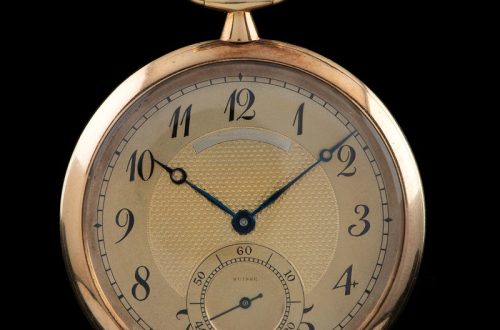The world of watches boasts a fascinating array of timepieces, each with its own unique character and mechanism. Among these, mechanical and automatic watches stand out for their intricate workings and enduring legacy. While both categories share the essence of watchmaking tradition, they differ in their approach to power source and user experience. Let’s embark on a journey to explore the captivating distinctions between mechanical and automatic watches, empowering you to choose the perfect timekeeping companion.

Part 1: Unveiling the Power Within
The Art of Manual Winding:
Mechanical watches are powered by a mainspring, a tightly coiled ribbon of metal that serves as the primary energy source within the watch’s movement. The mainspring is housed within the watch’s barrel and its controlled release of energy powers the timekeeping mechanism. To initiate this process, the wearer must manually wind the mainspring by rotating the crown, a small dial located on the side of the watch case. This action tightens the mainspring, storing potential energy that gradually powers the intricate movement of the watch.
Typically, a fully wound mainspring can keep the watch running for approximately 36 to 48 hours, though this duration can vary depending on the specific watch and its movement. As the spring unwinds, it prompts the need for rewinding in order to maintain the timepiece’s functionality and accuracy of timekeeping, thereby establishing an intimate and interactive connection between the wearer and their mechanical watch. The manual winding aspect adds a tactile and engaging element to the overall experience of owning and appreciating a traditional mechanical timepiece.
The Marvel of Automatic Winding:

Automatic watches, also known as self-winding watches, offer a more contemporary approach. They feature an ingenious component called a rotor, a semi-circular weight that spins freely within the watch’s core. As the wearer moves throughout the day, the rotor spins with the wrist’s movements. A complex gear train transfers this kinetic energy to the mainspring, automatically keeping the watch wound as long as it’s worn regularly. Most automatic watches also include a manual winding function for situations where the watch hasn’t been worn for an extended period.
Part 2: User Interaction and Maintenance
A Ritual of Care:
Mechanical watches require a more hands-on approach from their wearers compared to their automatic counterparts. Integrating the act of winding the watch into your routine, typically every day or every other day, is essential to ensure it keeps accurate time and continues running smoothly. Despite the need for regular winding, many watch enthusiasts view this as a cherished ritual rather than a chore. For them, it becomes a moment of connection with the timepiece, serving as a reminder to appreciate the meticulous craftsmanship and engineering within the watch. This hands-on engagement fosters a deeper connection and appreciation for the artistry and tradition of watchmaking, making the act of winding a mechanical watch a meaningful and fulfilling part of the overall experience for enthusiasts. Thus, the tactile ritual of winding a mechanical watch contributes to the emotional attachment and unique appreciation for these traditional timepieces.

Servicing for Longevity:
Both mechanical and automatic watches necessitate periodic servicing by a skilled watchmaker to ensure their continued performance and longevity. However, automatic watches might have slightly more intricate maintenance needs due to the additional rotor mechanism, which enhances the complexity of the movement. The frequency of servicing depends on various factors, including the watch’s quality, the intricacy of the movement, and the wearer’s activity level while wearing the watch. Lifestyle factors such as exposure to water, extreme temperatures, and physical shocks can also influence the servicing intervals for both types of timepieces. Neglecting regular servicing can lead to increased wear, potential damage, and decreased accuracy in timekeeping. Adhering to a regular maintenance schedule with a qualified watchmaker ensures that both mechanical and automatic watches continue to operate at their best, preserving their performance, reliability, and longevity for years to come.
Part 3: Accuracy and Power Reserve
The Quest for Precision:
Mechanical watches can be slightly more susceptible to minor variations in accuracy compared to their quartz counterparts. Factors like the level of winding and fluctuations in temperature can influence their timekeeping performance. However, advancements in watchmaking technology have resulted in high-quality mechanical movements that, when properly cared for and maintained, can maintain excellent accuracy. Despite the potential influences on timekeeping, a well-crafted mechanical watch, with its precise gears and intricate craftsmanship, can still offer exceptional accuracy and reliability. Each movement is a testament to the artistry and skill of traditional watchmaking, ensuring that these timepieces continue to maintain their allure and appeal. While some may view these minor variations as part of the charm of mechanical watches, it is important to note that with proper care and attention, they can uphold impressive accuracy, reflecting the enduring legacy and craftsmanship that are synonymous with mechanical timepieces.

The Power of Reserve:
Automatic watches generally boast a longer power reserve compared to their mechanical counterparts. While both categories typically offer a power reserve of around 36-48 hours, automatic watches can potentially keep running for extended periods if worn consistently. This extended power reserve is particularly advantageous for watch wearers who don’t wear their timepiece daily.
Part 4: Style and the Perfect Choice
A Spectrum of Styles:
Mechanical and automatic watches encompass a vast spectrum of styles and designs to cater to diverse preferences. Mechanical watches, often featuring a slimmer profile due to the absence of a rotor, might be preferred for dress watches where elegance is paramount. Automatic watches, on the other hand, can have a more robust build and sometimes showcase the mesmerizing dance of the rotor through an exhibition case back, adding a touch of mechanical flair.
Finding Your Ideal Match:

Ultimately, the decision between a mechanical and automatic watch boils down to your personal preferences and lifestyle. If you enjoy a hands-on experience and appreciate the traditional charm of watchmaking, you might find the perfect fit in a mechanical watch. If convenience and practicality are your priorities, an automatic watch might be a better choice.
In conclusion, both mechanical and automatic watches represent a captivating fusion of functionality, artistry, and heritage. Understanding the distinctions between their power sources, user interaction, and performance empowers you to make an informed decision when selecting your ideal timepiece. Whether you choose the classic ritual of winding a mechanical watch or the effortless convenience of an automatic, you’ll be wearing a piece that embodies centuries of watchmaking tradition and keeps a timeless legacy ticking on your wrist.





